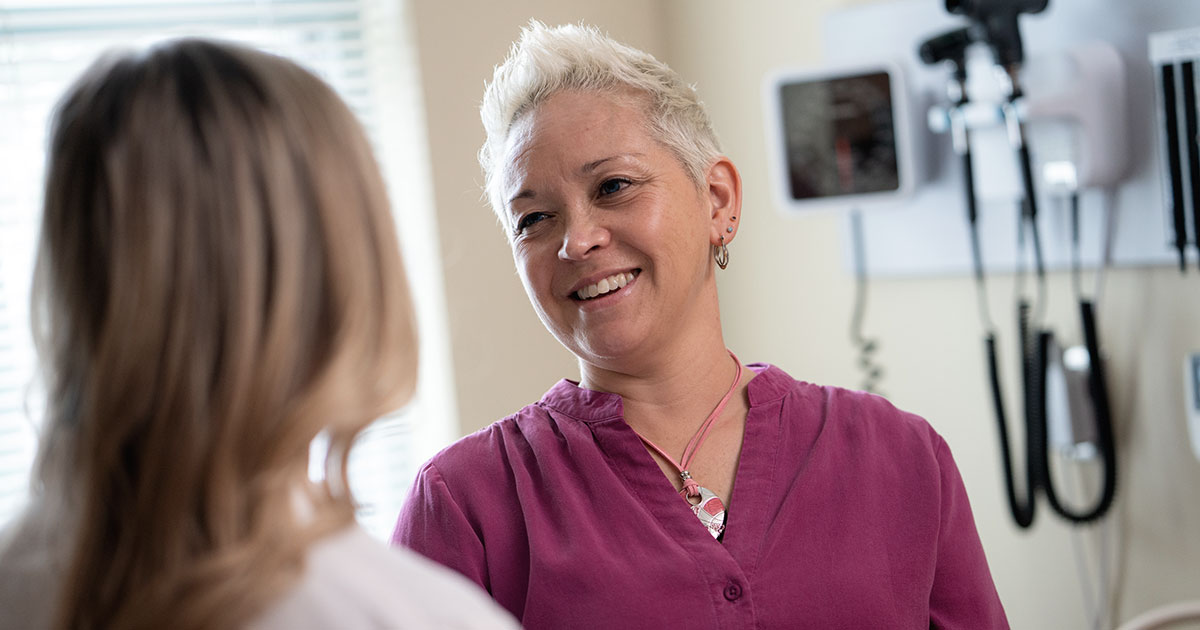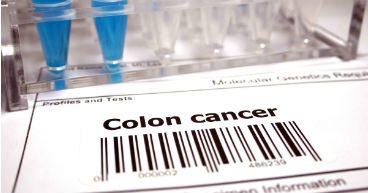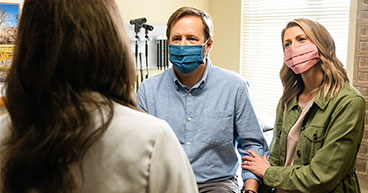
Over the past 30 years, the United States has celebrated a string of cancer success stories, including a declining rate of new cancer cases and better outcomes for those diagnosed with the disease.
The country’s cancer death rate has declined 33 percent since 1991, thanks largely to cancer research that has led to new treatments, gains in early cancer detection and, most significantly, a sharp decline in tobacco use, according to a new American Cancer Society (ACS) report.
Anti-smoking efforts—either getting people to kick the habit or encouraging them not to start smoking in the first place—have had the strongest impact on the improved outlook. The lung cancer death rate for men dropped by 58 percent from 1990 to 2020 and by 36 percent for women from 2002 to 2020.
Also working to lower the nation’s cancer mortality rate are new cancer treatments, improved cancer screening strategies and the use of the human papillomavirus (HPV) vaccine as a cancer prevention tool. HPV infections have been linked to a number of diseases, especially cervical cancer and head and neck cancers.
“We will never eliminate the development of cancer, which is an intrinsic component of the aging process,” says Maurie Markman, MD, President of Medicine & Science at Cancer Treatment Centers of America® (CTCA). “However, we must strive to optimize the use of screening strategies, strongly encourage HPV vaccination and continue to explore molecular markers. These markers may predict an increased lifetime risk of a particular cancer type and may justify additional or more intense screening.”
The ACS estimates that nearly 2 million new cancer cases will be diagnosed in the United States in 2023 and more than 600,000 will die of the disease. It also says that over the course of a lifetime, men have a 40.9 percent chance and women a 39.1 percent chance of being diagnosed with invasive cancer.
U.S. cancer death rate down 33 percent
The recorded U.S. cancer death rate peaked in 1991 and has been going down every year since, according to the ACS report published Jan. 12.The 33 percent drop means that, for a city with a population hovering around 100,000, about 70 fewer people died of cancer in 2020 than in 1991. Overall, the rate dropped from an average of 215.1 annual cancer deaths per 100,000 Americans in 1991 to 143.8 in 2020.
Five-year survival rates have also been increasing for an even longer period of time. The overall cancer survival rate was 49 percent in the mid-1970s. It currently sits at 68 percent.
According to the report, the cancers with the highest survival rates are:
- Thyroid cancer, at 98 percent
- Prostate cancer, at 97 percent
- Testicular cancer, at 95 percent
- Melanoma, at 94 percent
Cancers with the lowest survival rates are:
- Pancreatic cancer, at 12 percent
- Liver cancer, at 21 percent
- Esophageal cancer, at 21 percent
A number of reported shifts in the survival rates since 1975 cast a spotlight on how more cancer patients are surviving longer. Consider the examples below.
- Lung cancer: 12 percent to 23 percent
- Female breast cancer: 75 percent to 91 percent
- Colorectal cancer: 50 percent to 65 percent
- Kidney cancer: 50 percent to 77 percent
- Leukemia: 34 percent to 66 percent
- Non-Hodgkin lymphoma: 47 percent to 74 percent
The ACS report estimates that 3.8 million cancer deaths have been averted over the past 30 years—lives that would have been lost had cancer deaths continued at the 1991 rate. The number of prevented deaths was twice as high for men as for women (2.6 million vs. 1.2 million), in large part because the male death rate—influenced by the higher historical rate of male smokers—peaked higher and then dropped faster than the rate for women as more and more men stopped or avoided smoking.
Cancer mortality higher among certain racial, ethnic groups
Despite the progress being made in cancer incidence and deaths overall, the report identified racial disparities as a continuing concern.
For instance:
Black men have a 70 percent higher death rate from prostate cancer than white men.
Black women are twice as likely to die from uterine cancer as white women.
Black women are 4 percent less likely to develop breast cancer than white women, but they’re 40 percent more likely to die of the disease.
Native Americans (American Indian/Alaska Native) have the highest overall cancer death rate.
While a lack of access to high-quality cancer care may play a significant role in persistent racial disparities, the report says access alone isn’t sufficient to close the gap. For example, black patients with a household income of $75,000 or more are still less likely to survive cancer than similarly situated white people.
“In addition to concerns of access to care and socioeconomics, there are clearly biological/genetic issues that may predispose certain groups to a greater risk of cancer or to getting diagnosed at a more advanced stage,” Dr. Markman says. “Research efforts need to be focused on the discovery of factors that may be influenced by preventive strategies, heightened screening and, possibly, therapeutic interventions.”
What drove the cancer death rate down?
Improved screening has led to detection of early-stage cancers, often diagnosing the disease when treatment has a higher chance of producing a positive outcome.
Another key factor in reducing the cancer death rate is the revolution in treatment options for cancer, including:
- Immunotherapy, especially checkpoint inhibitors and CAR T-cell therapy
- Targeted therapy drugs that are matched to specific gene mutations or tumor markers
- Antibody-drug conjugates that deliver a cell-killing toxic substance directly to the cancer
- Adjuvant chemotherapy to attack cancer cells left behind during surgery on patients diagnosed with colon cancer or breast cancer
Even though fewer people are smoking these days, smoking-related lung cancer is still the deadliest of cancers. About 350 people die from lung cancer in the United States each day, the most of any cancer and nearly 2.5 times more than for colorectal cancer, which is the second-leading cause of cancer death in the country. More than 80 percent of the lung cancers that end in death are linked to tobacco use.
To bring down the nation’s cancer death rate even further, Dr. Markman says “continued efforts to reduce smoking, especially among the young” are needed, including “strong regulation of e-cigarettes that are an unquestionable gateway to the use of tobacco.”
Breast cancer, prostate cancer rates continue to rise
Another concern identified by the report is the rising incidence rates for specific types of cancer, including prostate cancer in men and breast cancer and uterine cancer in women—three of the most common cancer types.
Prostate cancer cases peaked in the early 1990s, when widespread testing began. Screenings using blood tests to identify prostate specific antigen (PSA) levels led to large increases in prostate cancer diagnoses, identifying cancer before patients began experiencing any symptoms. Screening recommendations tightened in 2008 and 2012 over concerns about overdiagnosis and overtreatment, given that the tests may produce false positives that lead to unnecessary worry and unnecessary treatments—and accompanying side effects—for cases that may have never produced symptoms.
However, after the screening changes were implemented, prostate cancer cases started to rise again, increasing about 3 percent a year from 2014 through 2019, with about half of the additional cases being diagnosed in less treatable, advanced stages of the disease.
“While I greatly appreciate the importance of aligning the benefits of cancer screening with possible harm and the costs of the available screening tests, in the case of screening for prostate cancer, the increase in disease incidence is very strong evidence the current guidelines need to be revised to support a more liberal screening strategy,” Dr. Markman says.
The U.S. Preventive Services Task Force changed its recommendations in 2018, calling for informed decision-making about testing in men ages 55 to 69 and the use of molecular markers and MRI-targeted biopsies of clinically significant tumors for more targeted screenings.
The number of new breast cancer cases, meanwhile, has been increasing by about 0.5 percent a year since the mid-2000s, growth the report says “has been attributed at least in part to continued declines in the fertility rate and increases in excess body weight.” The same risk factors may be responsible for the increase in uterine cancer cases, which have grown over the same time period by about 1 percent a year in women over the age of 50 and 2 percent a year in younger women.
Those uterine cancer statistics point to another disturbing phenomenon: an increase in early-onset cancer cases, typically described as cancer in adults under the age of 50. These cases have been on the rise for many cancers, including breast cancer, colorectal cancer, esophageal cancer and other cancers of the digestive tract.
Researchers say early-onset cancer may be prevented in part by promoting healthy diets and lifestyles in childhood and adolescence, discouraging smoking and alcohol consumption in those age groups, and encouraging physical exercise.
Cancer rates for children and adolescents
Thanks to dramatic declines in death rates for children and adolescents with leukemia—a drop of 84 percent in children and 75 percent in adolescents—the overall cancer death rate for children declined 70 percent between 1970 and 2020 and dropped 64 percent for adolescents.
Childhood cancers have also seen a stabilization in the incidence rate over the past decade after increasing steadily since at least 1975, the report says. However, the rate for adolescents continued to rise about 1 percent a year during the 2010-19 period.
“The 5-year relative survival rate for all cancers combined improved from 58 percent during the mid-1970s to 85 percent during 2012 through 2018 in children and from 68 percent to 86 percent in adolescents, but varies substantially by cancer type and age at diagnosis,” the report says.
How will COVID-19 affect future trends?
The ACS releases its Cancer Statistics reports annually. It’s unclear yet how COVID-19 will impact future figures. Medical professionals have consistently raised concerns that many people skipped regular recommended cancer screenings during the height of the pandemic, due to shutdowns in medical care facilities, fear of exposure to COVID or changes to their health insurance status after losing a job.
“Delays in diagnosis and treatment may lead to an uptick in advanced-stage disease and mortality,” the ACS report says. “These and other secondary consequences of the pandemic will occur gradually over time and will require many years to quantify at the population level because of the 2-year to 3-year lag in population-based cancer incidence and mortality data.”
If you’ve been diagnosed with cancer and want a second opinion about your diagnosis or treatment options, call us or chat online with a member of our team.



